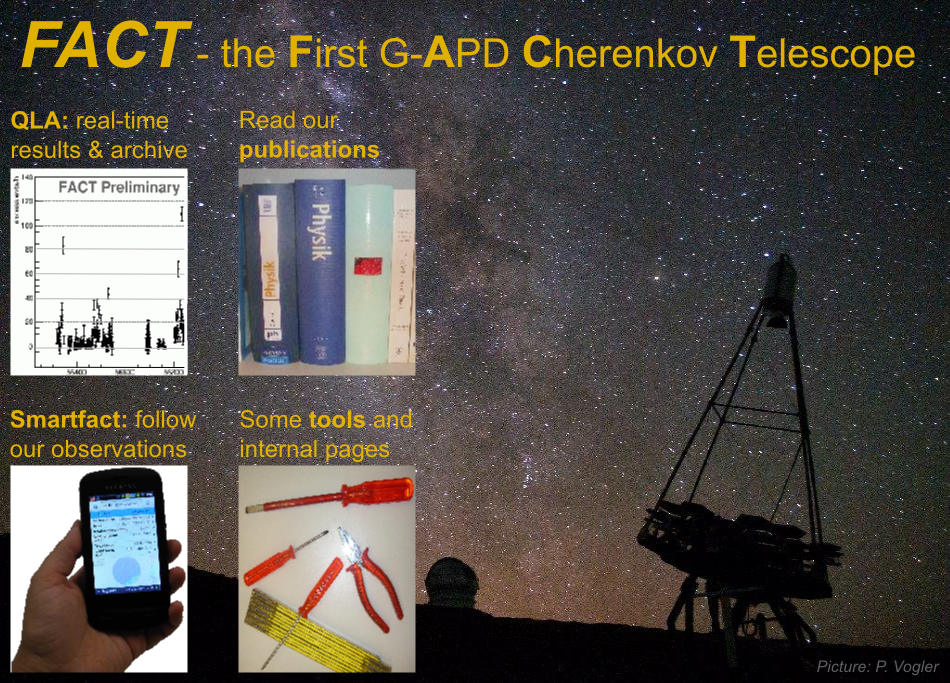
Within few hours, the first shower images were successfully recorded. This already showed that in contrast to PMTs, G-APD do not suffer from strong background light due to bright moon light. Since then, FACT is operated without major problem almost every night. To reduce operation costs, data taking is automatic since late 2012, controlled from remote without need of a data taking crew on-site. Experience from several years of operation shows that G-APD are highly reliable and stable devices and perform excellent under the harsh conditions intrinsic to Cherenkov telescopes. Methods were developed to calibrate and monitor the performance of the system without the need of any external calibration device, further reducing the operation costs. The experience gained so far is published in [2].
FACT takes data almost every night not only to gain information about the long term behavior of the novel photo sensors, but also for a dedicated physics program. An unprecedented monitoring of a set of bright extra-galactic sources of very high energy gamma-ray emission is executed. Several periods of strong flaring activities have already been detected and multi-wavelength observations initiated. The outcome of a preliminary analysis of the observations is publicly available within few minutes. The exceptional stability of FACT as well as the good time coverage due to the possibility to operate also under strong moon light conditions are ideal for such a monitoring program and relieves the very valuable large Cherenkov telescopes from that burden.
[1] H. Anderhub et al., "Design and operation of FACT -- the First G-APD Cherenkov Telescope", JINST 8 P06008 (2013), doi:10.1088/1748-0221/8/06/P06008
[2] A. Biland et al., "Calibration and performance of the photon sensor response of FACT -- the First G-APD Cherenkov Telescope", JINST 9 P10012 (2014), doi:10.1088/1748-0221/9/10/P10012
contact: biland at phys.ethz.ch